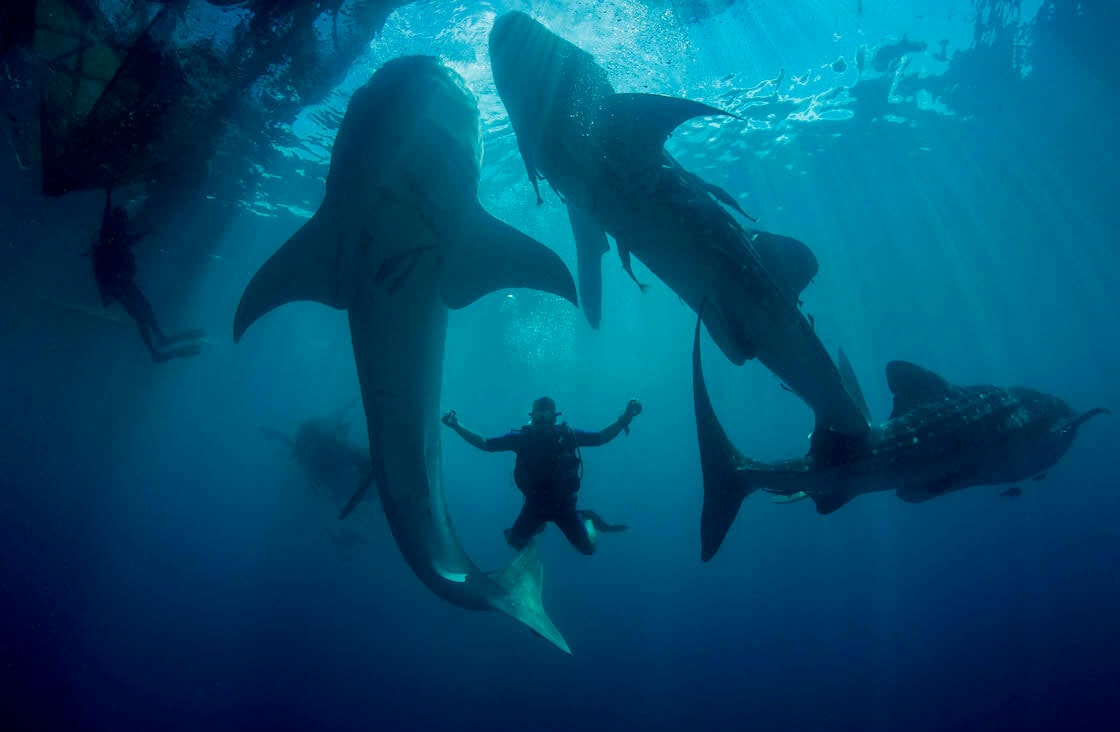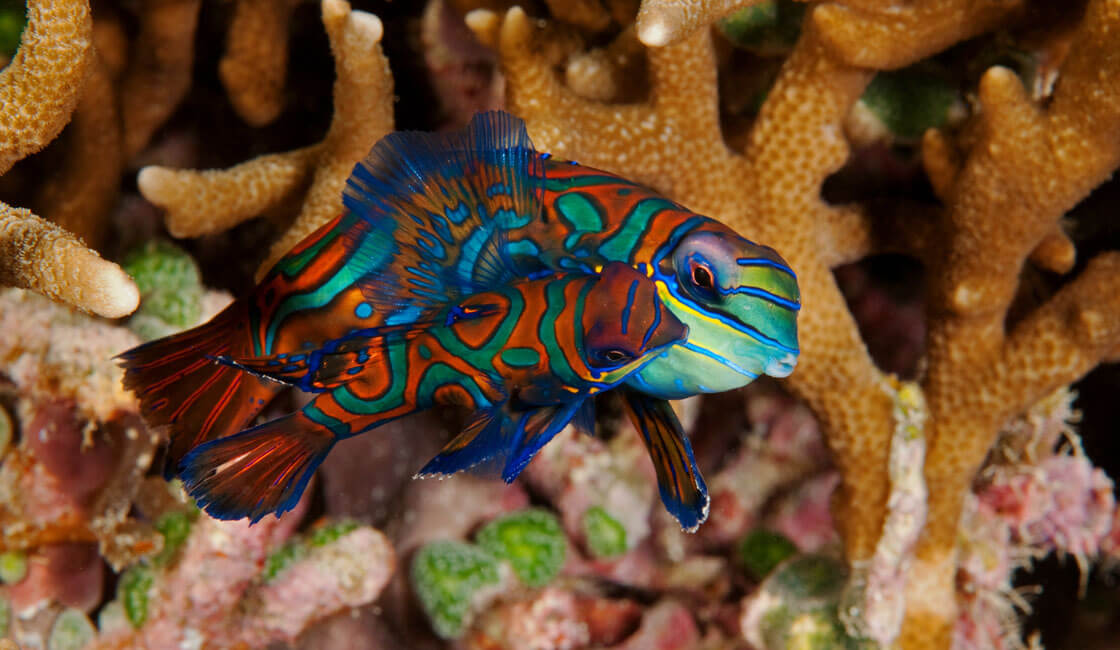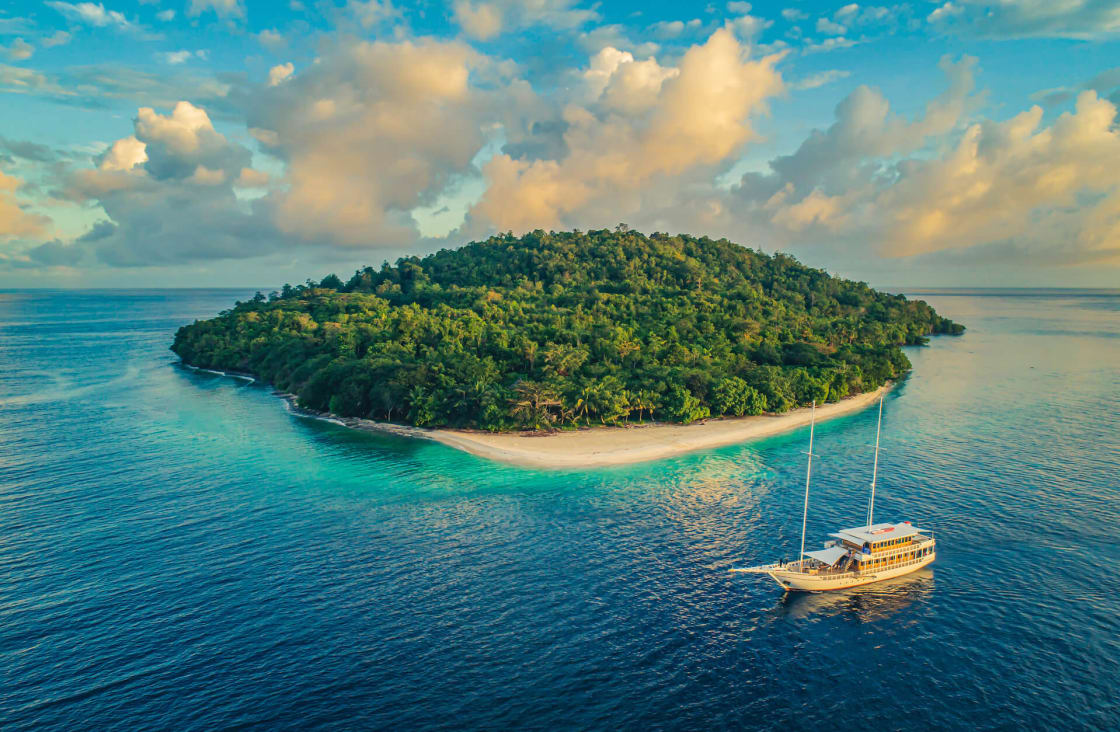
Straddling the Equator off the extreme north-western tip of Indonesia’s Papua province, Raja Ampat is an archipelago of 610 islands; a figure that can be boosted to more than 1500 if you count the karst islets, which are so undercut by waves that they look like mushrooms, topped with rich jungle to create an astonishing, polka dot topography. The larger islands are distinguished by rugged coastlines covered with virgin rainforest extending right down to the water’s edge, where nature has carved out a series of coves and lagoons, inlets, caves, and shaded, sandy beaches.
Until the millennium, the name Raja Ampat was completely absent from Indonesian travel brochures. Trailblazing diving expeditions, undertaken by modern-day explorers and adventurers, have since put the archipelago on the map. Today this region, which has been described as the ‘Last Paradise on Earth’, is world famous as one of the most noteworthy ecological niches on the planet, on a par with the Great Barrier Reef and the Galápagos.

Marvel at the mating dance of Mandarinfish and more in the majestic marine sanctuary of Raja Ampat.

Marine biologists have established that it is home to 70 percent of the known coral species on the planet. Many of the fish, corals and crustaceans that live in these waters are found nowhere else on Earth. With vast and pristine coral reefs that are fed by the largest movement of water in the world, you’ll have more than a few chances to spot everything from tiny macro critters such as pygmy seahorses, nudibranchs and ghost pipefish, cuttlefish and crustaceans to large pelagics, tuna, barracuda, reef sharks, walking sharks, manta rays and turtles. It is also home to rare endemic species such as the tasseled wobbegong shark. Other highlights include large schools of fish, including Spanish mackerel. There’s also an excellent chance of spotting marine mammals including dolphins, whales and even dugong.
The main way to enter Raja Ampat is from Sorong, West Papua, and the easiest way to get to Sorong is to fly to Makassar (Ujung Pandang) from Jakarta or Bali and take an onward flight from there to Sorong. Most liveaboards include Raja Ampat on their itineraries and Sorong is the start point.
Cruise Raja Ampat aboard liveaboards such as White Pearl, a sleek, 187-foot, motorized superyacht that can comfortably accommodate up to 20 guests for luxury scuba diving cruises. Fenides is a 135-ft, luxury liveaboard with a sleek phinisi-inspired design, her large cabins accommodate up to 11 guests. Tiare is a 150-ft traditional Phinisi boat, catering to 14 guests. With 7 cabins and personal service, La Galigo is a stylish liveaboard designed for friends and families. Lady Denok is an elegant phinisi schooner that accommodates up to 12 guests. The splendid, 164ft, motor-sailer yacht, Silolona, offers lavish private chartered cruises, and the 164-foot Kudanil Explorer is a robust expedition yacht with an industrial exterior complemented by a modern and luxurious interior, she accommodates sixteen guests for private charters.

The Fenides Liveaboard is one of the best options for scuba divers wanting to explore the region in style.
On all of these boats—and there are plenty more to choose from—you will get the chance to explore some of the most spectacular dive sites that Raja Ampat has to offer, with the additional opportunity, if you wish, for above-water adventure and activities. You’ll also have the chance to follow the best conditions in search of exciting marine species, or head to known spots where seasonal gatherings take place.
If you’re planning to go diving in Raja Ampat, There are two distinct parts to this vast region, north and south, offering unique and different dive experiences. The best time of year to dive Raja Ampat is year-round in the north, and from October to May in the south.
If you prefer to be land-based for your Raja Ampat diving adventure, you’ll find that the majority of dive resorts in Raja Ampat are found in the north, in and around the Dampier Strait, particularly on the islands of Gam, Waiego, Kri and Batanta. The resorts rest beside sheltered bays, with calm, clear water ideal for beginners. However, some of the dive sites in North Raja Ampat present challenging conditions, and many Raja Ampat liveaboards require an Advanced Open Water certification to join.

Otherworldy Wobbegong sharks are worth the journey to Raja Ampat alone.
The north is where you’ll find many of the best dive sites in Raja Ampat, including Sardine Reef, Manta Ridge and Manta Sandy. At the poetically named, Blue Magic, you’ll find a reef top covered in hard coral with some big coral heads and some tabling Acropora corals well over 10 feet across. Look for wobbegong sharks here and the often-sleeping Raja Ampat epaulette sharks (the walking shark). Look out for the resident school of big eye trevallies and you should also see many large barracuda. Green turtles can be found here as well as black tips, white tips and the occasional grey reef shark. In season it’s a giant manta magnet with several cleaning stations on the reef top. There is also plenty of macro here, starting with pygmy seahorses.
At Cape Kri, huge schools of big-eye trevallies, barracudas and snappers can be seen hanging over the drop off. A large shallow coral garden crowns the reef with blacktip reef sharks traversing the network of hard corals with feeding hawksbill turtles. Massive Queensland groupers down to the diminutive ever-present pygmy seahorse can be seen on this phenomenal and always-surprising dive site.

The special sight of a hawksbill seaturtle feeding is just one of the splendors that await those diving Cape Kri in North Raja Ampat.
Consider staying at the Raja Ampat Biodiversity Eco Resort located on a stunning white sand beach at the heart of the Dampier Strait. The resort combines a perfect location with tranquillity, fabulous service and a strong emphasis on sustainable travel, social responsibility, and marine conservation.
In South Raja Ampat, you’ll find the Misool Eco Resort, which is one of the National Park’s loveliest and most sustainable choices. However, South Raja Ampat is harder to get to, so a liveaboard is probably your best option. In this region, you will find a different underwater landscape, with pinnacles and ridges carpeted in soft coral, sea fans and sponges, and even up-close encounters with giant oceanic manta rays.
You’ll normally find less-challenging conditions than the north, with plenty of sites perfectly suited to intermediate divers. Two of the most famous sites near Misool are Magic Mountain, an offshore pinnacle with a long and narrow ridge, on top of which shoals of bannerfish, pyramid butterfly and yellow snappers can be seen cavorting, persistently stalked by giant trevallies, orange-spotted jacks and longnose emperors. The ridge drops progressively, with yellowtail barracudas patrolling the upper sector and white tip and grey reef sharks found nestled under the large coral tables. At the end of the peninsular is a cleaning station where oceanic manta rays come to be cleaned from parasites by wrasse and other reef fish.

Melanistic manta rays are strangely common in Raja Ampat, more so than anywhere else on Earth.
The other site is Boo Rock, which is known for the “windows” or rounded openings on the end of the largest rock, which completely pierce the reef from the surface down to 16 feet deep. The two rocks are connected underwater by a stunning reef draped in soft corals and brimming with fish. Reef sharks, fusiliers, snappers, parrotfish, surgeonfish, schooling batfish, and moray eels can all be found here, as well as a wide variety of nudibranchs, unicorn fish, octopus and green turtles.

In all honesty, the pure, unadulterated splendour of Raja Ampat astounds anyone who ventures the enormous distance to get there. Whether you choose to base yourself in one of the region’s remarkable dive resorts, or explore further by luxurious liveaboard, divers are sure to be rewarded with spectacular species and lifelong memories of this underwater wonderland.
While Rainforest Cruises aim to provide accurate and up-to-date information, we make no representations as to the accuracy or completeness of any information herein or found by following any link on this site. Rainforest Cruises cannot and will not accept responsibility for any omissions or inaccuracies, or for any consequences arising therefrom, including any losses, injuries, or damages resulting from the display or use of this information.




